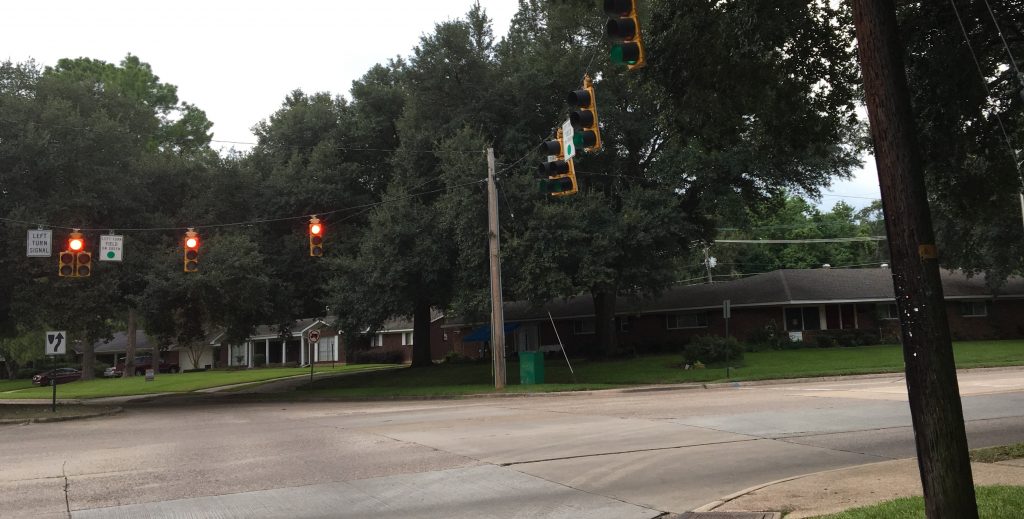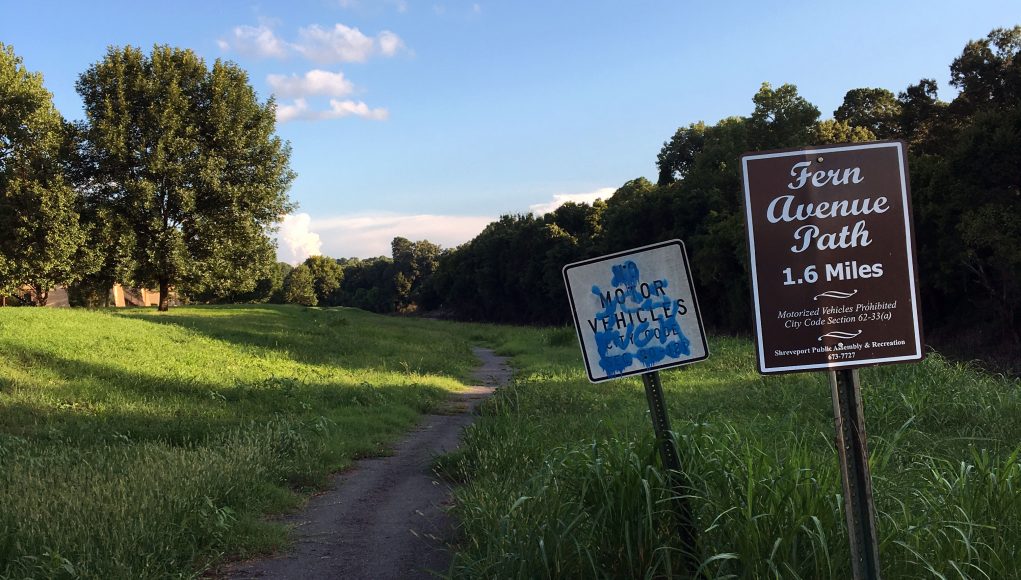Plans. Shreveport has an abundance of them. Some examples include a thoroughfare plan, a city-wide master plan, and now, a bike plan. These plans include ideas like ‘walkability’ and ‘access to nature based recreation.’ Plans are helpful to provide a framework in which individual projects should occur, but mean nothing unless concepts like ‘walkability’ and ‘access to nature based recreation’ are transformed from buzzwords into action.

Let’s take what I call the Bayou Pierre Corridor. I use this corridor primarily for recreation, as it provides a comfortable running environment through established, canopied neighborhoods and along Bayou Pierre. Additionally, it could also be a route for non-motorized transportation from homes to workplaces, from Highland to the commercial areas along E. 70th Street. Established trails and sidewalks provide an over 3.5 mile comfortable pedestrian environment along a variety of scenery that is perfect. Well, almost perfect.
If you are a regular at Marilynn’s or Ki’ Mexico, you’ve seen the trails along Fern Avenue, along Bayou Pierre. While only the width of a sidewalk, the route extends south along Fern through some older, canopied residential neighborhoods.
South of Pierremont, the sidewalk west of Fern continues, but used to terminate where the neighborhood stopped. Within the last year, some new sidewalk has been added to provide a connection south to E. 70th. This sidewalk is a little wider and provides a simple path to many businesses and restaurants.
The Fern Avenue Path runs along Bayou Pierre from 70th street down towards the car dealerships along Bert Kouns. While the trail is not well-kept, it provides a nice, out-of-the-way view along Bayou Pierre and is a great recreational asset for the city. Yet, it’s location away from any pedestrian destinations prevents it from being fully utilized.
At two critical junctures, this corridor is truncated for users unwilling or unable to cross two busy arterial roads. The care put into removing barriers for motorized transportation is not put into removing barriers to non motorized transportation. The following pedestrian barriers prevent the corridor from being a truly useful recreational area or non-motorized route.

The Pierremont intersection is not suitable for many pedestrians to cross. No crosswalks are present, leaving the pedestrian to cross 60+ feet without any protection. The E. 70th intersection is worse, with higher traffic counts and the same limitation as Pierremont.
Both intersections could be enhanced by adding crosswalks and creating a pedestrian corridor that would add to the vitality of our region. Instead of a crosswalk on E. 70th, a pedestrian island (as seen below) could be added to the center lane to ensure a safe crossing by users of all ages.

In Shreveport, there aren’t road corridors with brief stretches of dirty or muddy parts that only certain types of vehicles can cross. Yet there are barriers non-motorized transportation in the form of intersections that many individuals cannot cross.
Sometimes improving Shreveport isn’t about the big projects, it’s about a few little improvements like those mentioned above. Such steps, if taken, would help to meet several important goals which fit into already stated goals in our Master Plan like promoting nature-based recreation and alternative transportation in Shreveport. It simply requires an attention to detail and a new mindset. It requires a cohesive vision by city leaders that gives attention to all citizens of Shreveport.

